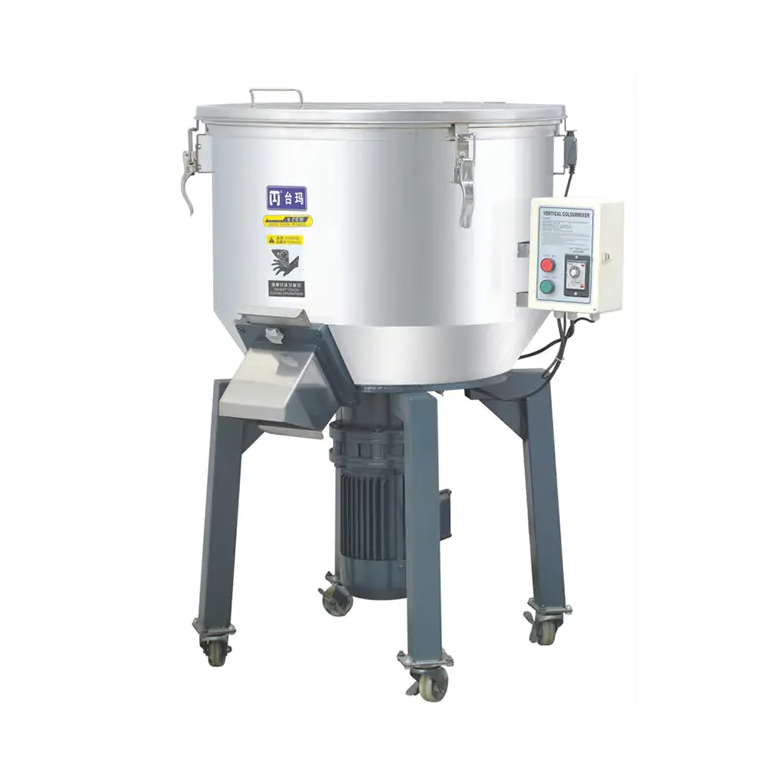The Vertical Color Mixer has become a widely used piece of equipment in the plastic processing industry, primarily for its speed, efficiency, and compact design. It is specifically engineered to mix plastic pellets, color masterbatches, and other granular materials quickly and uniformly. However, an important question arises for manufacturers and processors: Is the Vertical Color Mixer suitable for all types of plastic granule mixing?
To answer this question, it is important to consider how the Vertical Color Mixer operates. Typically, it uses a high-speed rotating screw or blade within a vertical chamber to circulate materials from bottom to top in a continuous motion. This vertical circulation pattern ensures that colorants or additives are evenly distributed throughout the batch of base resin. For most general-purpose thermoplastics, such as polypropylene (PP), polyethylene (PE), ABS, or polystyrene (PS), the Vertical Color Mixer performs exceptionally well. These types of plastic pellets are relatively uniform in shape, density, and flow behavior, making them ideal for rapid and homogeneous mixing in this kind of machine.
However, not all plastic materials are created equal. Some specialized polymers and engineering plastics come in irregular shapes or have varying bulk densities. For instance, glass-filled or mineral-filled resins can be significantly heavier than unfilled ones. Similarly, foamed pellets or lightweight resins may not flow efficiently in a standard vertical configuration. In these cases, the mixing efficiency of a Vertical Color Mixer can be reduced, leading to uneven distribution or incomplete blending. Manufacturers may need to adjust the mixing time or speed, or in some cases, opt for a different type of mixer altogether, such as a horizontal mixer or a tumble blender.
Additionally, moisture-sensitive materials like nylon (PA) or polycarbonate (PC) pose another challenge. These resins often require drying before processing and may be negatively affected by the heat generated during mixing. While most Vertical Color Mixers do not inherently provide drying functions, some advanced models offer heating jackets or integrated drying options. Still, for moisture-sensitive applications, careful monitoring is required to ensure that the mixing process does not compromise material quality.
Another factor to consider is batch size and production volume. While Vertical Color Mixers are excellent for medium to large-scale mixing, they may not be ideal for very small batches of high-value engineering plastics where over-mixing or material loss must be avoided. In such scenarios, precision lab mixers may be a better choice. Conversely, for large-scale operations, the vertical design is highly space-efficient and allows for rapid batch turnover, making it ideal for continuous production environments.
In summary, while the Vertical Color Mixer is suitable for a broad range of plastic granules, it is not universally applicable to every type. Material characteristics such as density, shape, sensitivity to moisture or heat, and specific mixing goals must be evaluated before choosing the appropriate equipment. That said, with the right configuration and operational adjustments, the Vertical Color Mixer remains one of the most versatile and efficient solutions available for plastic pellet mixing in the industry. Manufacturers need to understand their material properties and production needs to fully leverage the benefits of this widely used mixing technology.
Fast, evenly mixing, low energy consumption, and high productivity.
Small footprint and is equipped with castors for movability.
Planet-cycloid reducer is durable and low-noise.
The safety switch ensures machines operate only when the lid is closed.
The lid and barrel bottom are formed for precise alignment and durability.
The timer can be set within 0-30 minutes.
